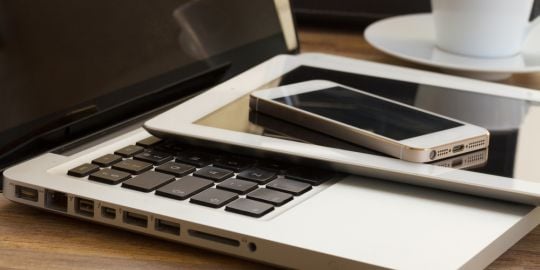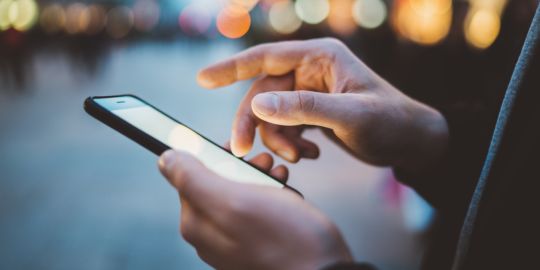Hello everyone,
What are the best ways you've found for keeping in touch with friends and family back home while living in Spain? How frequently do you stay in touch with loved ones?
Are there local equivalents to common instant messaging and online video calling services that you prefer or are more widely used?
If there is a sizeable time difference, how do you manage this?
Do you make international phone calls from a landline or mobile phone from Spain? What do you think of the cost?
Thank you for sharing your experience.
Priscilla
Keeping in touch while living in Spain
Whatsapp, I do not use Facebook.
Hi
I keep in touch via what's app phone calls and texting on the app. This is the best app in Spain and also in England. It is totally free on my mobile. I also keep in touch by emails and for those friends and family on Instagram I tag them when I post. I no longer use facebook, and have never used twitter. With what's app all my international calls are free.
Terrylee Cox
Whatsapp in Spain and Europe and Skype in the US. I have a skype number in the US that works like a local phone. Also use messenger at times. I have had my US skype number for perhaps 20 years at around $30/yr for the tel number and $3/mo local service. Can call anyone in the US free and phones in the rest of the world cheaply. Also occasionally use the apple product, facetime.
claxnes wrote:Whatsapp in Spain and Europe and Skype in the US. I have a skype number in the US that works like a local phone. Also use messenger at times. I have had my US skype number for perhaps 20 years at around $30/yr for the tel number and $3/mo local service. Can call anyone in the US free and phones in the rest of the world cheaply. Also occasionally use the apple product, facetime.
You can use Google to call the US for Free.
I have a need for a stable US telephone number, and have had the same skype number for a long time, so for now I will keep it. Thanks for the info, though. Haven't called on google.
Try a telephone. 
A telephone, or phone, is a telecommunications device that permits two or more users to conduct a conversation when they are too far apart to be heard directly. A telephone converts sound, typically and most efficiently the human voice, into electronic signals that are transmitted via cables and other communication channels to another telephone which reproduces the sound to the receiving user.
In 1876, Scottish emigrant Alexander Graham Bell was the first to be granted a United States patent for a device that produced clearly intelligible replication of the human voice. This instrument was further developed by many others. The telephone was the first device in history that enabled people to talk directly with each other across large distances. Telephones rapidly became indispensable to businesses, government, and households, and are today some of the most widely used small appliances.
The essential elements of a telephone are a microphone (transmitter) to speak into and an earphone (receiver) which reproduces the voice in a distant location. In addition, most telephones contain a ringer which produces a sound to announce an incoming telephone call, and a dial or keypad used to enter a telephone number when initiating a call to another telephone. Until approximately the 1970s most telephones used a rotary dial, which was superseded by the modern DTMF push-button dial, first introduced to the public by AT&T in 1963. The receiver and transmitter are usually built into a handset which is held up to the ear and mouth during conversation. The dial may be located either on the handset, or on a base unit to which the handset is connected. The transmitter converts the sound waves to electrical signals which are sent through a telephone network to the receiving telephone which converts the signals into audible sound in the receiver, or sometimes a loudspeaker. Telephones are duplex devices, meaning they permit transmission in both directions simultaneously.
The first telephones were directly connected to each other from one customer's office or residence to another customer's location. Being impractical beyond just a few customers, these systems were quickly replaced by manually operated centrally located switchboards. This gave rise to landline telephone service in which each telephone is connected by a pair of dedicated wires to a local central office switching system, which developed into fully automated systems starting in the early 1900s. For greater mobility, various radio systems were developed for transmission between mobile stations on ships and automobiles in the middle 20th century. Hand-held mobile phones were introduced for personal service starting in 1973. By the late 1970s several mobile telephone networks operated around the world. In 1983, the Advanced Mobile Phone System (AMPS) was launched, offering a standardized technology providing portability for users far beyond the personal residence or office. These analog cellular system evolved into digital networks with better security, greater capacity, better regional coverage, and lower cost. Today, the worldwide public switched telephone network, with its hierarchical system of many switching centers, can connect any telephone on the network with any other. With the standardized international numbering system, E.164, each telephone line has an identifying telephone number, that may be called from any other, authorized telephone on the network.
Although originally designed for simple voice communications, convergence has enabled most modern cell phones to have many additional capabilities. They may be able to record spoken messages, send and receive text messages, take and display photographs or video, play music or games, surf the Internet, do road navigation or immerse the user in virtual reality. Since 1999, the trend for mobile phones is smartphones that integrate all mobile communication and computing needs.
Strange question. Letters, telephone calls, Facebook, WhatsApp, e-mail, Skype. carrier pigeons, post cards and Morse code all work in Spain almost as well as they do in the UK.









